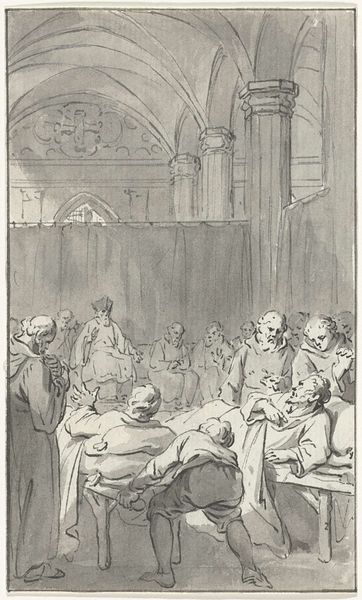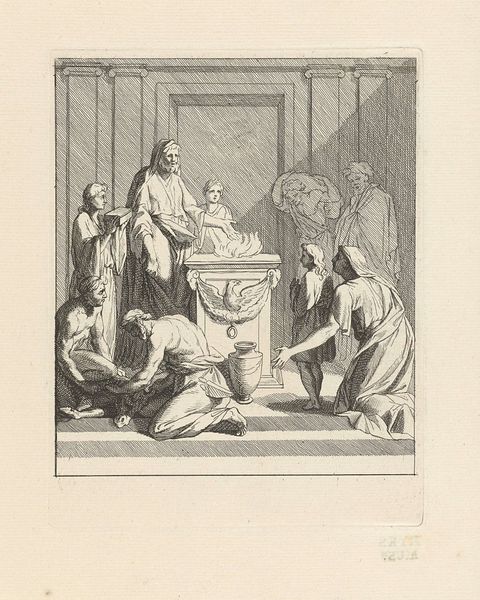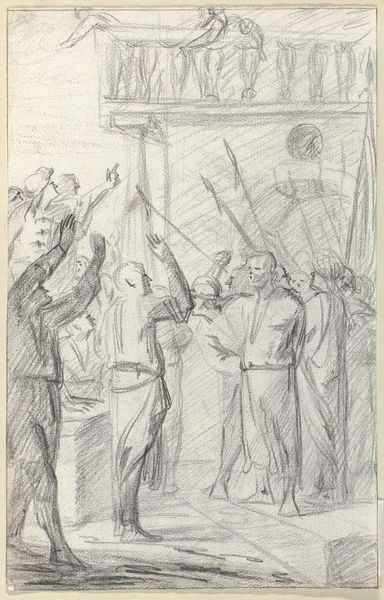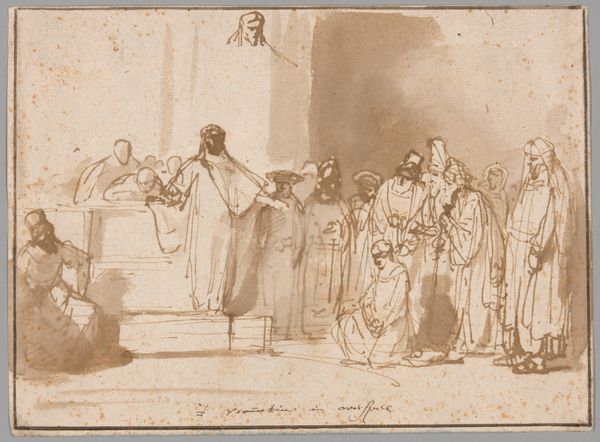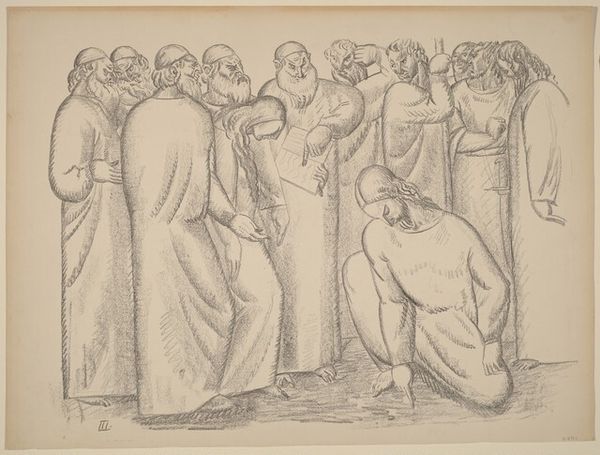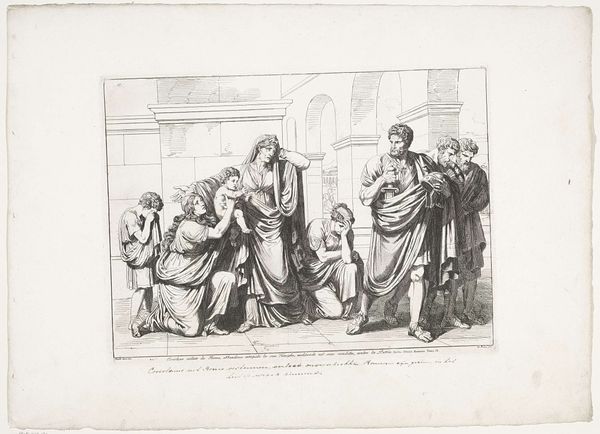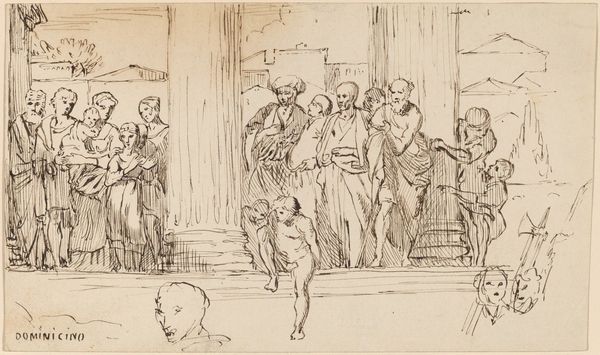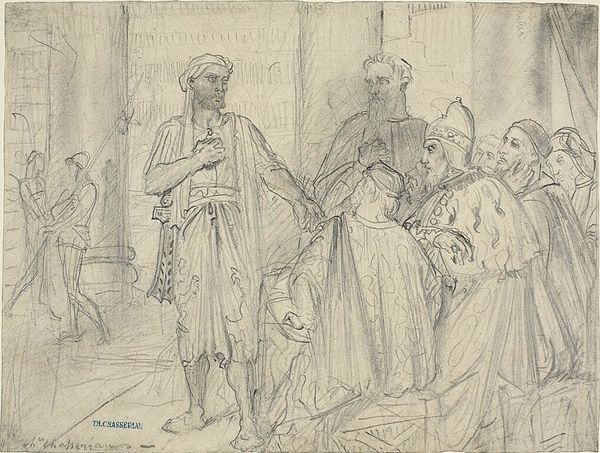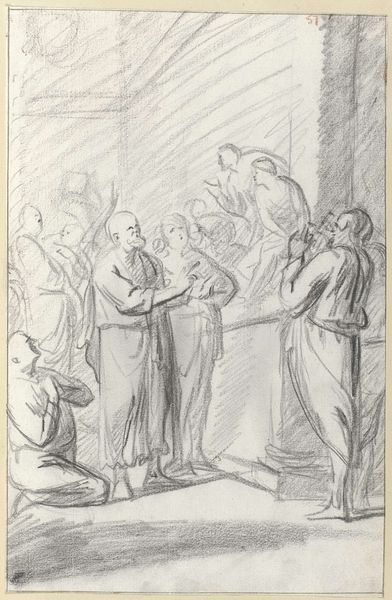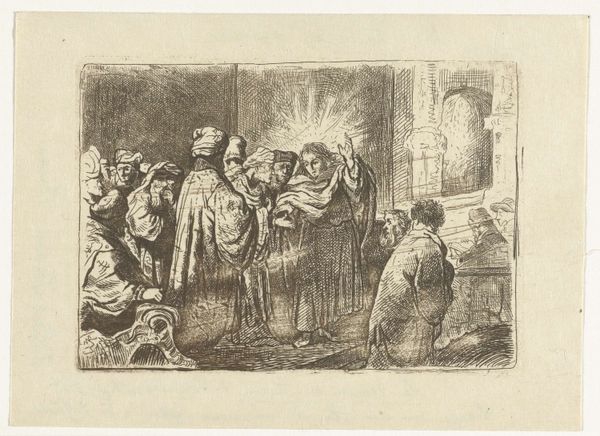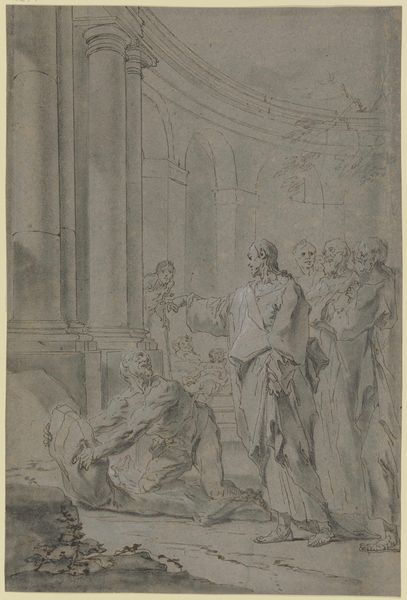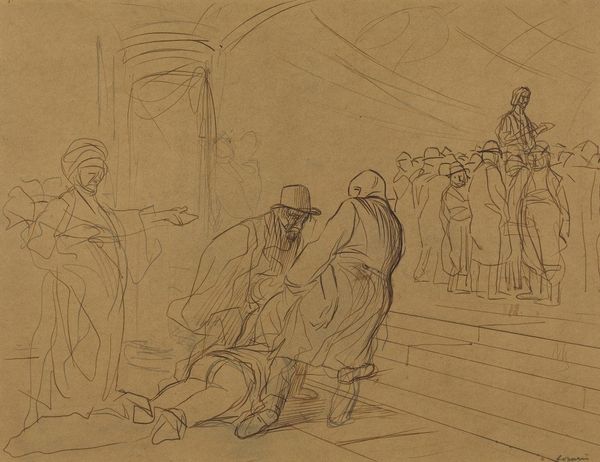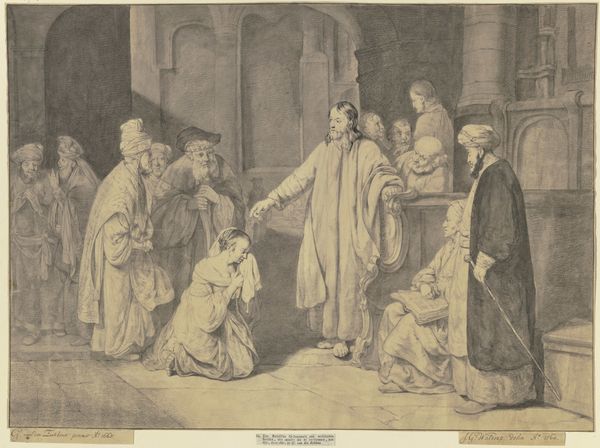
drawing, print, pencil, charcoal
#
portrait
#
drawing
#
narrative-art
# print
#
pencil sketch
#
charcoal drawing
#
pencil drawing
#
group-portraits
#
pencil
#
charcoal
#
academic-art
Dimensions: image: 230 x 346 mm sheet: 287 x 410 mm
Copyright: National Gallery of Art: CC0 1.0
Curator: This work is entitled "The Titian - Minneapolis" and was created by Anthony Angarola in 1926, employing charcoal and pencil. What stands out to you upon seeing it? Editor: There’s an immediate solemnity. The greyscale tones contribute to a feeling of historical weight and reverence. The faces are largely downcast, suggesting mourning or perhaps deep contemplation. Curator: Indeed, it resonates with the traditional iconography of lamentation. You see it echoed in depictions of mourning found throughout art history – that bowed head is a universal signal. Notice, too, the figure in the background rendered in the lightest values, almost ghostly. It could represent the Titian artwork referenced in the title itself, suggesting memory, artistic legacy, and the weight of the past bearing down upon the present viewers. Editor: It’s fascinating how Angarola places us, the viewers, within a crowd observing both a painting and, seemingly, a ritual. I wonder about the socio-cultural context of displaying “Titian” in Minneapolis in the 1920s. Was it part of a movement to bring European art to the American Midwest, shaping public taste and education? Curator: That’s a compelling angle. The act of viewing art collectively carries its own ritualistic power, and the implied presence of this celebrated renaissance artwork definitely lends cultural capital to the scene. The faces communicate their emotions with limited strokes: anxiety, fatigue, humility, connecting viewers across the ages. Editor: The artistic style also piques my interest. The loose, sketchy quality gives a sense of immediacy, contrasting with the established "Titian," which invokes tradition and canonical values in visual arts. Was this a conscious stylistic choice to critique the reverence attached to Old Masters? To democratize the experience through a modern lens? Curator: It prompts consideration on how styles influence understanding and engagement. Through the language of drawing, Angarola creates not just an image, but a shared psychological landscape reflecting the powerful, evolving role of museums within modern culture. Editor: I’m left thinking about the changing dynamics between artist, artwork, and audience. It certainly makes you wonder how people related to art, and museums, then… and now. Curator: I appreciate you flagging those connections. I find this image has staying power, asking the questions: who and what remains with us? And what do we carry with us as we move forward?
Comments
No comments
Be the first to comment and join the conversation on the ultimate creative platform.
